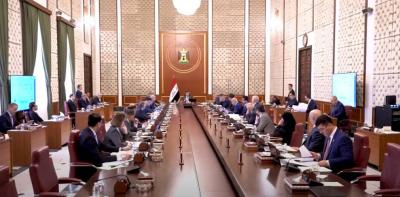The Iraqi government led by Mohammed Shiya al-Sudani faces challenges in managing its relationships with Washington, which still retains military bases and troops in the country, amidst an official decision to expel foreign forces and the outbreak of limited confrontations from time to time between American forces and armed factions. Following the approach of its predecessors, al-Sudani's government has sought to bring views closer and rejected any attack from either side in the balance between American forces and armed factions.
Although the frequency of confrontations has significantly decreased since the beginning of 2024, the Ain al-Asad base housing American troops has faced three attacks in recent days, with the government's response being clear in all cases: a need for restraint and to avoid direct conflict among all parties. This was confirmed during a phone call on August 4, in which Prime Minister al-Sudani and U.S. Secretary of State Antony Blinken discussed Iraq's increased efforts for calm, both in regard to internal conditions and in the broader context of the Middle East and the situation in Gaza.
### Modifying the Strategic Framework
Al-Sudani's government believes that steps towards modifying the strategic framework agreement signed in 2007 between Washington and Baghdad are the optimal solution to end the conflict or the use of Iraqi territory to settle regional scores between Washington and Tehran. This point was highlighted by Iraqi Army spokesman Major General Yahya Rasool, who stated in a February 12 announcement that meetings are regularly held to expedite the work of the committee tasked with drafting a new version of the agreement, "as long as nothing disrupts the discussions."
According to unofficial statistics, the number of U.S. troops in Iraq at the beginning of the invasion in 2003 was about 130,000, fluctuating over the years between 100,000 and 150,000. It increased to about 170,000 as violence escalated in 2007. By the end of 2011, the U.S. completed its invasion of Iraq under President Barack Obama, withdrawing its forces, except for a small number of military advisors. However, with the rise of ISIS in large parts of Iraq in 2014, Washington doubled its forces to over 5,000, before reducing them to 3,000 in 2021, and then to about 2,500 this year.
### Close Equation
Member of Parliament Alaa al-Haidari stated that after the assassination of Qassem Soleimani and Abu Mahdi al-Muhandis, there was a political and parliamentary decision to expel foreign troops, stressing, "We do not need advisors or fighters, and our security forces are fully ready to defend Iraq and protect its security and sovereignty." According to political researcher Haidar Hamid, "U.S. troops are located in various places inside Iraq, including Victoria Base near Baghdad International Airport, Ain al-Asad Base in Anbar which is the largest, in addition to Harir Base in Erbil and finally the U.S. Embassy in Baghdad."
Hamid mentioned that "various political and social factors, along with the strength of decision-making within the Shiite house, have given resistance factions a clear influence on the presence of U.S. forces in Iraq through rockets or drones," ruling out "Washington's desire to expand the conflict with those factions during this period." He emphasized that "the factions are capable of targeting U.S. forces at any points where they exist due to their precise maps of those forces' locations." However, he noted, "it cannot be denied that there are differences in the size and quality of the military arsenal between the U.S. army and the resistance factions, but the tactics and strategies used by the factions make the equation close and the scale of influence mutual."
### Secret Truce
Researcher and academic Jalil al-Lami revealed that al-Sudani's efforts have led to the secretly extended truce between armed factions and the U.S. side to ensure the avoidance of escalation between the two parties, asserting that al-Sudani's government has successfully "held the stick from the middle," as he described it.
Al-Lami noted, "The armed factions in Iraq have clearly expressed their desire for the exit of U.S. forces at any cost, while Washington sought to establish a new agreement with al-Sudani's government similar to the strategic framework agreement that ensures the prolonged presence of its forces in Iraq." He added that the government succeeded in brokering a truce between the two sides in October of last year, coinciding with the Gaza war that extended to mid-May of this year. He continued that this truce was "successfully extended in secrecy by al-Sudani's government, in order to continue negotiations and ensure that neither side loses."




